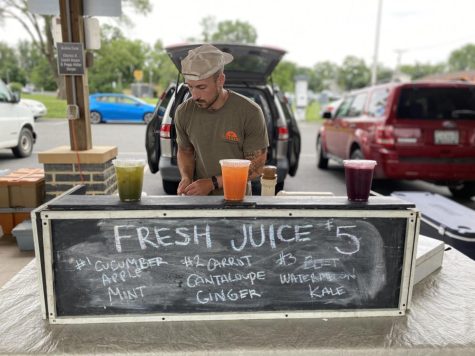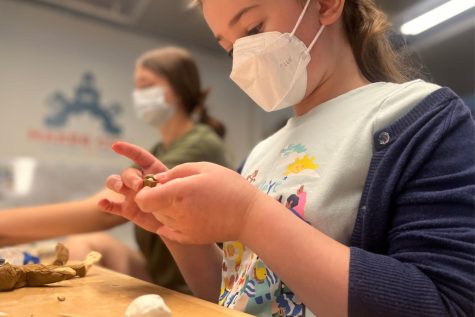In funds we trust
Harrisonburg citizens voice diverse opinions on where $23.8 million ARPA funds should go.
July 21, 2022
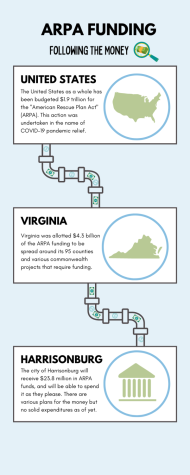
ARPA, also known as the American Rescue Plan Act, was a $1.9 trillion relief package signed into effect in early 2021 by the Biden administration. The goal of the act was to provide monetary assistance to all levels of government and nongovernmental organizations hurt by the COVID-19 pandemic.
The act may have been signed into effect as of last year, but funds for select places have still not been completely allocated, resulting in a slow down in the aid vital to the government and citizenry of the United States.
The city of Harrisonburg, Virginia, has not completely allocated its ARPA funds nor announced what officials plan to do with the $23.8 million in their hands.
As of now, the Harrisonburg government has held limited conversations on the spending of the ARPA funds, and the only known project that has begun is retention payments for city officials. These payments totaling up to $2 million, approximately 10% of the entire funding, are aimed to make Harrisonburg, “more competitive in job recruitment of vital positions,” as stated in an official article regarding ARPA funds.
Only two other projects were discussed by the city: a low barrier shelter for the increasing homeless population and a construction of a fifth fire station in the city. However, both projects have stayed as plans as no progress has been announced.
Under the scrutiny of the public, the city is implored to spend every cent with maximum efficiency. The city has received diverse public feedback on how they should spend these funds, with the most notable being a presentation given by the Institute for Constructive Advocacy and Dialogue. ICAD, which is based out of the nearby college of James Madison University, gave a presentation at a City Council meeting in June this year where the institution gave examples of how the funds should eventually be decided on where they would be used.
The city also conducted several surveys requesting citizens to rank funding priorities uploaded on their official website. The options on the survey included improving community mental and physical health, supporting K-12 students, bettering public transportation and more.
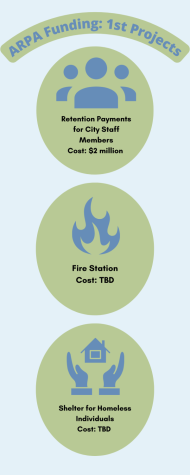
Amy Strunk, a professor at JMU, was one of the many citizens who selected public transportation as their top priority for the survey of ARPA funds.
“I would like to see some of these funds go into better sidewalks and improved transportation downtown,” Strunk said. “There are so many neighborhoods that don’t have sidewalks.”
Strunk’s concern was shared by others in the city including Mary Sprunger, a professor at Eastern Mennonite University.
“It strikes me that there are still some places in Harrisonburg where there are dangerous situations where you have to walk on people’s lawns,” Sprunger said.
Some citizens, including former JMU student Didi Elder, hoped for the funds to be targeted towards infrastructure, an issue less discussed than others.
“Harrisonburg is just not a disability friendly city. Because it’s so old, a lot of buildings don’t have ramps, elevators or stuff like that, but it doesn’t mean that we can’t change [this],” Elder said.
Others were more concerned with internal issues in the city, including the lack of childcare, a common worry among parents of Harrisonburg. Rachel Peters, mother of one year old Henry Peters, expressed distress on the limited access to childcare within the city.
“We knew we’d have to find childcare for this August, but childcare is at a premium, especially in this city,” Peters said. “I know several people who have chosen after the pandemic to stay home with their kids due to a lack of childcare.”
Peters, who is also a teacher in the city of Harrisonburg, felt the need for extra funding for schools and teachers as August quickly approaches.
“I would be lying if I said I wouldn’t like to see some of it go directly to teachers’ paychecks,” Peters said. “Bonuses along the way really help morale and help us to get through. [I would like to see] funding towards specialist training for teachers, social emotional learning and technology, because now every kid needs technology for class.”
The urge for student support, however, was not limited to K-12 schools. Bredon Poling, a student at JMU, stated his opinion on funding for mental health issues targeted towards students.
“My main concern is that a majority of funds go to mental health, for all people, but specifically college age students,” Poling said. “That should be where a majority of the funds go because of high suicide rates, depression, anxiety [and] all that stuff.”
However, the opinions of citizens were significantly dependent on their own role within the community, leading to distinction of ideas between students and business owners. Irina Dovganestskiy, owner of withSimplicity, urged the city to consider small business aid.
“I feel like small businesses really do need just some help to get back on their feet, especially when you have a brick and mortar,” Dovganestskiy said. “It’s super hard for a small business to deal with such big [jumps] with overhead. Our ingredients went up, our containers went up, our payroll went up and being a small business means we have to sustain all of it.”
Keeping the aim of the covid relief funds in mind, many citizens have requested support for small businesses, a main source of income for individuals who have been hit hardest throughout the pandemic.
“America is run by small businesses,” Dovganestskiy said. “We’re the heart of the community and when people think of Harrisonburg, they want to come to those little places to eat and shop locally, [doing] something that’s unique to our town.”
There is no one answer to where the ARPA funds should be spent; in consideration of Harrisonburg’s diverse population with diverse problems, no one issue should be solely targeted with the entire 23.8 million in the city’s hands. The ARPA funds should be utilized with all issues in mind in an effort to create the most good for the community the government represents. Just as the answers were diverse, so should the solutions.


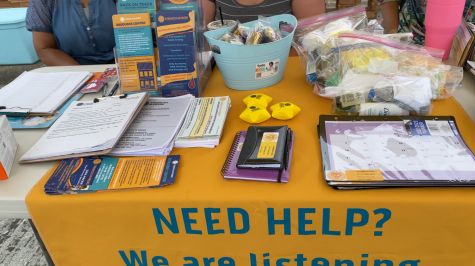



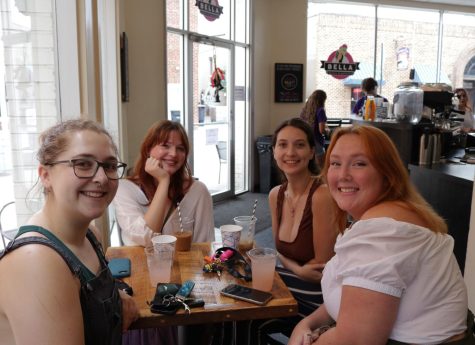
![Nelson Garcia, his father, and brother pose for a photo at the Harrisonburg Farmers Market on July 18. Together they cook barbecue chicken to bring light to the original Virginia barbecue. “[My family is involved in this business. I work with my] brother and my father [along with] my other brother and my mother helps out too,” Garcia said. Photo by Eryn Morgan](https://vajta.org/wp-content/uploads/2022/07/DSC_0046-475x316.jpg)

